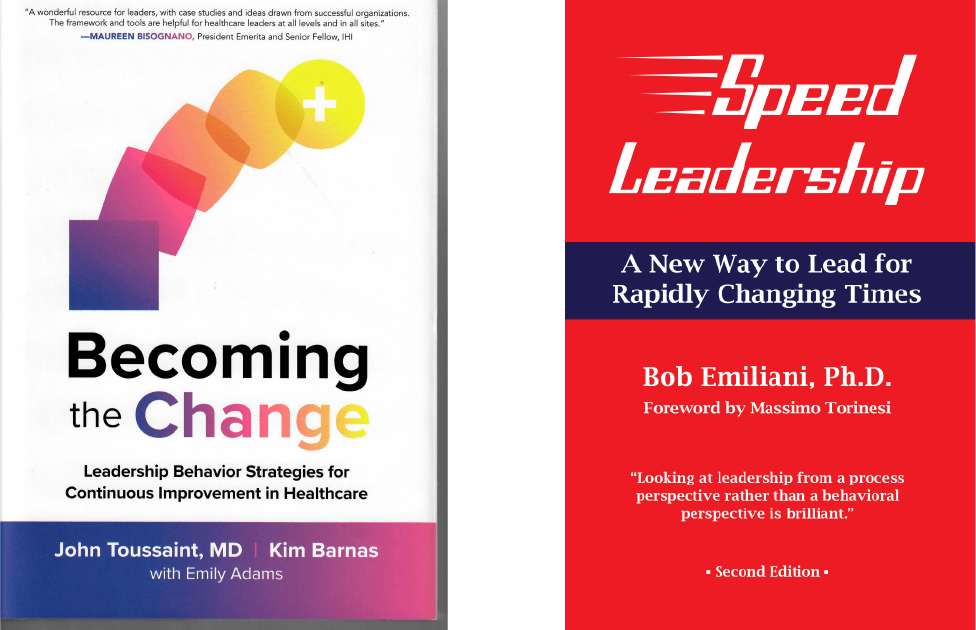
In a recent blog post, “Ahead Yet Still Far Behind,” I lamented the continuing hope that the only solution to widespread adoption of Lean management is to change leaders’ behaviors. This is the same magical thinking bet that has been placed by untold numbers of leadership researchers, educators, trainers, change agents, coaches, mentors, etc., throughout the 100-plus year history of progressive management. Sure, we can point to examples of success, but the overall impact is negligible at any point in time. Nevertheless, people continue to believe this is the one smartest bet.
The latest bet is to re-purpose A3s reports from a tool for solving workplace problems faced by managers to a tool called “personal A3s” to change leaders’ beliefs and behaviors. Again, while we may be able to point to examples of success, one should not expect much from “personal A3s.” As we know from the 30-plus year history of Lean (and Scientific Management before that), tools are readily adopted and soon used incorrectly, thus subverting their intended purpose and diminishing their effectiveness. This change in function and utility is often driven by hierarchical control of organizations and the requirement to conform to the latest internal training measure or management directive. It is also the result of simple misunderstandings or a desire to take shortcuts. Lean tools typically become a “check the box” activity and are often gamed to give the appearance of improvement. Will it be any different with personal A3s? There is a strong human evolutionary basis for preferring discrete, simple to use tools, over more complex methods and systems.
Personal A3s for leaders are the 2020 version of 1990s leadership “competency models.” The image below on the left side shows a personal A3 from the new book, Becoming the Change: Leadership Behavior Strategies for Continuous Improvement in Healthcare by John Toussaint, M.D. and Kim Barnas. The image on the right side shows an individual development plan that results from leadership competency model workshops (click on image to enlarge). Personal A3s and competency models (and associated leadership development plans) are two closely-related methods for achieving the same elusive outcome. Where is the progress that one should expect?

When I was a manager at Pratt & Whitney, I participated in two week-long leadership development competency model workshops. I found the first workshop very useful — but that was primarily because I was already four years into self-directed leadership development. The majority of peer leaders, however, found it to be mostly worthless. My self-development, corporate leadership development, and shop floor kaizen experiences inspired me to create a leadership development model called “Continuous Personal Improvement.” That, plus inspiration from the book Lean Thinking by Womack and Jones, led me to write an important follow-on work about “respect for people” called “Lean Behaviors.” That was 1998.
When you are trying to solve a problem and improve something, you don’t stop. I learned that from Shingijutsu kaizen consultants in 1994. So I did not stop; I kept going. In the years following I explored the sequential relationship between numerous leadership beliefs, behaviors, and competencies and came up with a much better model, one that was even more practical. After that, I came up with a truly simple approach to leadership development called “Speed Leadership” that allows one to bypass the slow and tedious work of leadership development and proceed directly to improvement. In between, I spent more than a decade working to understand the underlying causes that make leadership behavior so difficult to achieve. The point is not “Look at me, I kept going.” The point is, why have others well-versed in continuous improvement and problem-solving stopped? Why is their behavior to keep putting all their chips on changing leaders’ behaviors?
I am sure there will be some beautiful examples of leaders who find personal A3s to be very helpful and perhaps even a life-changing route to improved leadership thinking and practice. But the question will remain: What about the other 99-plus percent of leaders who see no reason to change their behaviors or become better leaders, whether it is via personal A3s, “leading with respect” motivational interviewing, authenticity, competency models, emotional intelligence, 360-degree feedback, or any other method (gamble)?
One hundred and eight years ago, Frederick Winslow Taylor gave us an important clue about how leaders responded to progressive Scientific Management:
…nine-tenths of our trouble has been to “bring” those on the management’s side to do their fair share of the work… Invariably we find very great opposition on the part of those on the management’s side…
We have experienced the exactly the same thing with Lean management — nine-tenths, if not more. Thirty-four years ago, Taiichi Ohno gave us another important clue about the change that is necessary to succeed with TPS:
We are doomed to failure without a daily destruction of our various preconceptions.
Taylor found that top leaders do whatever they want to do (or not want to do), while Ohno found that if you want to leaders to change, their preconceptions must first be destroyed. How does one confront these two enormous barriers? Unfortunately, there is no easy answer. Most leaders refuse to learn anything about progressive management — the mindset (so-called “Lean thinking”), the methods such as kaizen (most effective at destroying preconceptions), or tools such as A3 — and so they cannot coach it. These facts should propel people to want to learn about the deep underlying causes of leaders’ resistance to change. That information now exists:

The quest to solve this problem must continue. In the meantime, big bets will continue to be placed on leadership development methods that avoid the facts of the matter as articulated by Taylor and Ohno, and progress that can be made will not made due to yet another diversion. While some leaders will indeed benefit from personal A3s, expectations for success should be realistic.
Smart gamblers spread their bets to manage risk and increase the chances of winning. You should try that.

Read both books and and try it out!
